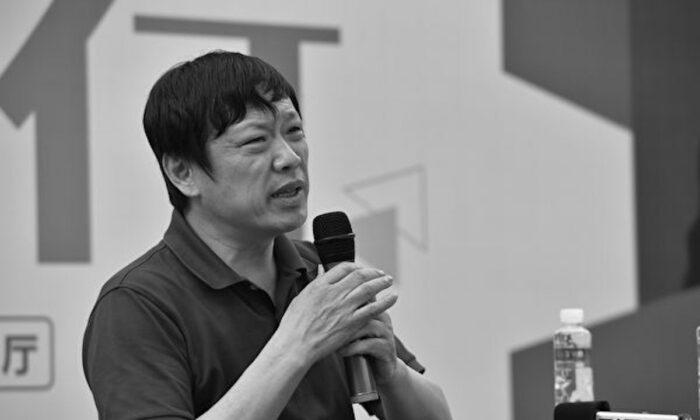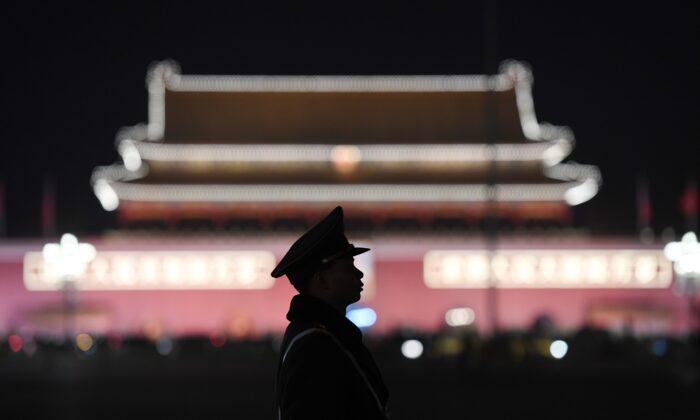Not long after a group of eight men and women dressed in black, armed with long knives, killed at least 29 people and injured 143 at a railway station in southern China, Chinese censors soon took firm charge of the story.
Reports and bloody photographs initially poured out from the March 1 massacre, yet the noise was quickly suppressed—not due to a lack of public interest, but rather from an order from the Communist Party’s Central Propaganda Department.
The order read, according to China Digital Times, “Media that report on the knife attack incident that occurred March 1 at the Kunming Railway Station must strictly adhere to Xinhua News Agency wire copy or information provided by local authorities. Do not treat the story with large headlines; do not publish grisly photos.”
The official Xinhua report from March 3, which Chinese media were ordered to follow, was only two paragraphs long.
The first paragraph said the Chinese Communist Party security boss, Meng Jianzhu, visited the victims at Kunming First People’s Hospital. The second paragraph briefly outlines the attack, calling it the act of a “violent terrorist gang” led by Abudurehim Kurban, who they identified as the leader.
None of the major daily newspapers in China outside Yunnan published the story on their front pages. Many Internet posts have since been deleted. Time magazine noted that even Kunming Daily, the local newspaper where the incident happened, ran only the two-paragraph Xinhua article on its front page along with a short editorial written in standard Party jargon.
According to Xinhua, four of the alleged assailants were shot, one woman was arrested, and three others were captured later.
Disturbing Efficiency
Going by eyewitness accounts posted on China’s microblogging sites, the assailants appeared to be highly organized and unusually skilled.
One netizen, Zuo Ruxing, posted on Weibo that each victim was dispatched with disturbing efficiency by the assailants. “The killers only used one thrust each time before immediately moving to the next victim, nonstop, constantly searching for new targets to slaughter.”
Another netizen claims to have overheard a police officer saying there was “no second stab” on any of the victims.
The method suggests the assailants were well-trained. A victim is more likely to die from a stab wound than a slash, which is why military doctrine on sword use often favors hard thrusts.
The apparent training of the assailants, the almost immediate laying of blame—within hours—at the feet of Xinjiang separatists, along with the location of the attack, have raised some suspicions among Chinese netizens.
Echoes of Bo Xilai
A number of observers noted that Kunming station is near the location of China’s No. 14 army base.
The proximity of the attack to the No. 14 army base in Kunming seemed to trigger the floating of online rumors of political intrigue. The military base has ties to the former Politburo member, Bo Xilai, who was part of the rival faction to the Communist Party’s current leader Xi Jinping.
According to The Wall Street Journal, Bo’s ties to the base had “alarmed Beijing” when he visited it in 2012, noting that “it was home to the 14th Group Army, a direct descendant of guerrilla forces his father led in the 1930s.”
After Bo Xilai fell, Chongqing Mayor Huang Qifan exposed that Bo controlled at least two of China’s field armies.
It was also rumored that amid the political turmoil that eventually led to Bo’s sentence to life in prison, the No. 14 army in Kunming had sided with Bo. The rumors were fed by reports that the Central Military Commission of the Chinese Communist Party sent five groups to investigate relations between Bo and military bases in Kunming, Guizhou, Sichuan, and Chongqing. The No. 14 army base in Kunming was on the investigation list.
Theories of Conspiracy
Chinese Internet users who were dissatisfied with the way the authorities had handled the story—stifling independent discussion and investigation, while aggressively asserting the attackers’ Xinjiang allegiances—suggested their own theories of conspiracy behind the attack. Like the Chinese authorities’ version of events, there is no independently verifiable evidence of such speculation about the identities and motives of the attackers.
One netizen, Gulang Mosan, commented, “Don’t you think those uniformed scoundrels seem familiar? Just like those well-trained, strong figures that led the crowds smashing Japanese cars in the anti-Japan Defend the Islands campaign ...”
The Defend the Islands movement was a series of apparently grass-roots street protests in 2012 aimed at supporting China’s sovereignty over the Senkaku Islands, which are controlled by Japan. The protests were allowed by the authorities, even after they became extremely violent.
As a rule, the Party does not allow freedom of assembly. Careful observers thought they noted signs that a number of the more energetic protest leaders carried affiliations with the Party’s public security apparatus. The year of 2012 was full of speculation about political scheming in China, after the arrest of Bo Xilai and his wife. Some thus linked the protests to remnants of Bo’s clan, trying to create trouble before the handover of power to Xi Jinping in November of that year.
Another netizen noted on Weibo that the assailants wore uniforms—which was widely reported—and several elements of the attack, including their apparent knowledge about military use of knives, suggested “they have planned for a long time.”
The same netizen noted that the incident took place before the upcoming “two sessions” of the National People’s Congress and the Chinese People’s Political Consultative Conference on March 5.
Additional research by Ariel Tian and Lu Chen.




